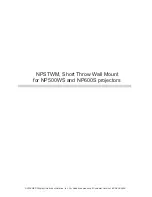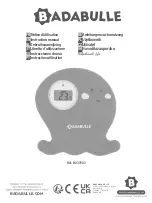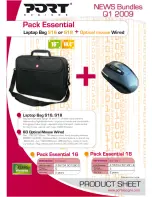
S4000C
7
NOTE:
Do not use any material or substance on threads that contact the sensor housing.
The removal of particulate matter from sensor accessories may be done through the use of an
appropriate halogen-free solvent. Water or ethanol are examples of suitable solvents. The
accessories should be thoroughly dried with compressed air, if necessary, before refitting to the
sensor body.
3.5 Terminal Connections
The terminal blocks (TB) are located inside the housing and can by accessed by removing the
cover. A label on the inside of the housing cover provides details of all the terminal
connections.
3.5.1 Terminal Block TB1 – Sensor Connections
TB1 contains the three sensor connections, white (W), black (B), and red (R). Remove the
display board by loosening the two captive screws on the board and lifting it straight up.
Connect the color-coded wires from the combustible sensor to the matching colored terminals
on TB1. The label on the inside of the cover can serve as a guide. Replace the display board
by pressing it into place, and tightening the two captive screws.
WARNING:
Do not c24VDC to TB1. Damage to the electronics may result.
3.5.2 Terminal Block TB2 – Power and Signal Connections
TB2 contains the connections for Power, Relay Reset, Remote Calibration, MODBUS and 0-
20mA Output Signal. The terminal connections are as follows:
TB2 position
Function
1 0-20mA
Output
2
CH1 MODBUS -
3
CH1
4
CH2 MODBUS -
5
CH2
6
Remote Calibration
7 Relay
Reset
8
Ground
9 +24VDC
Power
Table 1: TB2 Power and Signal Connections
It is recommended that a three-wire (red, black, white) shielded cable be used for making
power and output signal connections on the Model S4000C. The Spring Type terminal block
accepts 14 AWG to 20 AWG and the Screw Type terminal block accepts 12 AWG to 18 AWG
stranded or solid wire. Each wire should be stripped before wiring the Model S4000C Intelligent
Sensor. To connect wiring to the Spring Type terminal block, insert a screwdriver into the
orange tab and press down (Figure 6), opening the terminal. Insert the wire into the terminal
and release the orange tab, clamping the wire in the terminal. Check the hold of the wire by
GENTLY tugging it to ensure it is locked in.
















































